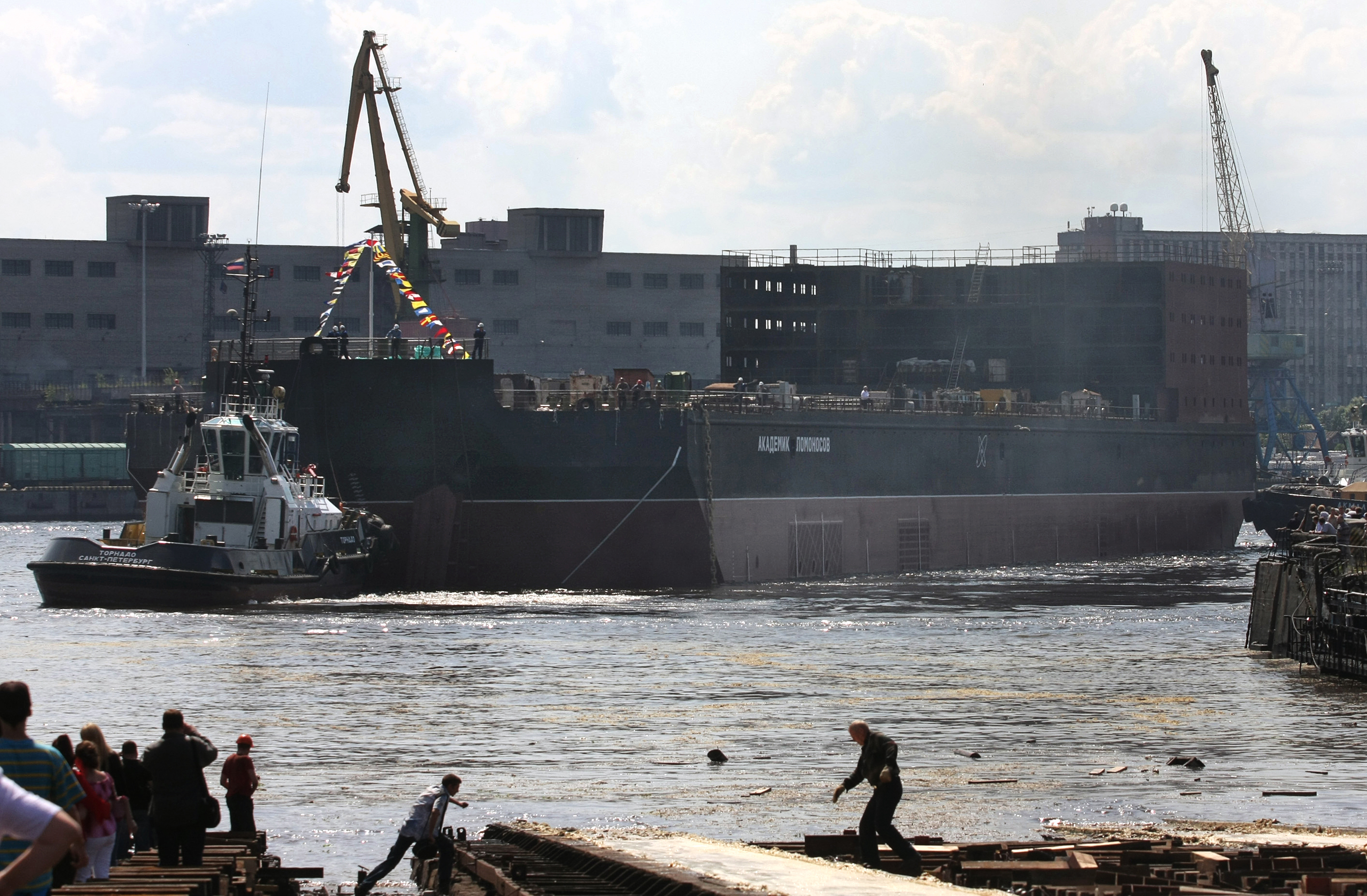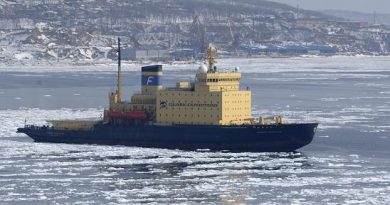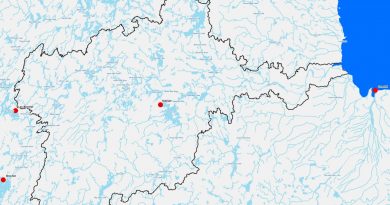Preparing the ground for Russia’s first floating nuclear power plant

In early October, regional authorities together with nuclear power company Rosatom officially plugged the first pile to become part of the port infrastructure on the shore of Pevek, the Russian east Arctic town.
The ceremony took place as the construction of nuclear power installation «Akademik Lomonosov» is getting near completion at the Baltic Yard in St.Petersburg. By late 2017, the floating plant will be ready to be towed towards the north, Rosatom says.
Power for the region
At the same time, regional authorities inform that the laying of power lines to site has started. The 110 kW line will be 235 km long and connect with Bilibino and Peschanka, a press release informs.
The «Akademik Lomonosov» has two KLT-40s type reactors with a production capacity of up to 70 MW. It will be instrumental in powering several new industrial projects in the region. Among them is the Peschanka copper project, which ultimately is to produce up to 1,2 million tons of ore per year
The project is owned by Baimskaya Mining Company LLC, a part of Millhouse of Roman Abramovich, and is reportedly to be ready for production start in year 2022.
Along the Norwegian coast
The «Akademik Lomonosov» is believed to be towed out of the Baltic Sea and north along the Norwegian coast in the course of the first half of 2018. In Murmansk, the power station will be loaded with uranium fuel, whereupon it will be tugged further eastwards along the Northern Sea Route, all the way to Pevek.

Arrival of the power station to Pevek is due in September 2019, and the first power production will start later the same year, Rosatom says.
The coming of the «Akademik Lomonosov» will include a radical change for Pevek, the small Arctic town of 4,500 people. A total of 304 people will be employed by Rosatom on site, of them 42 on permanent basis in Pevek, the rest on a commuting in-and-out basis. According to the company, more than 30 people have already been hired.
In September, three ships delivered more than 6,000 tons of construction materials to Pevek. The shipments will allow the company to continue construction works through the winter. Rosatom and shipping companies are careful to avoid a similar situation to the one in January this year when three vessels got stuck in the Arctic ice when delivering goods to site. They remained in Pevek all through winter.
Related stories from around the North:
Canada: Test clean energy solutions in south before implementing them in Arctic communities: report, Radio Canada International
Finland: Finland playing catch-up with Nordics in wind turbines, Yle News
Norway: Another disappointment in Barents Sea exploratory drilling, The Independent Barents Observer
Russia: New locomotives for world’s northernmost railway will run on liquefied natural gas, The Independent Barents Observer
Sweden: Volvo to go all electric starting in 2019, Radio Sweden
United States: U.S. transportation secretary announces efforts to speed up project development in Alaska, Alaska Dispatch News



